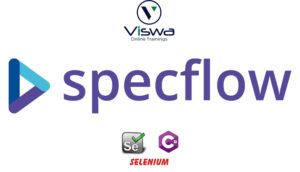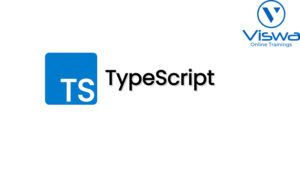Testing Tools / Software Testing Certification Training
One of the top providers of online IT training worldwide is VISWA Online Trainings. To assist beginners and working professionals in achieving their career objectives and taking advantage of our best services, We provide a wide range of courses and online training.
Learners : 1080
Duration : 40 Days
About Course
Any graduate from any stream is eligible for the Testing Tools programme. The Testing Tools Development Life Cycle is process-oriented. A Quality Analyst analyses the software using the testing tools life cycle and gives the client or end user assurance. Understanding requirements, test planning, test design (scenarios and test cases), test execution, result analysis, defect tracking and reporting, and other areas are the key areas of concentration for the STLC. In the modern world, quality is crucial in the IT sector. With the use of third-party tools, testers are able to carry out retesting and regression testing, which is important in the testing industry.
Testing Tools Training Course Syllabus
✔ Introduction to Testing
✔ Importance of Software Testing
✔ Principles of Software Testing
✔ Psychology of Testing
✔ SDLC models
✔ Verification &Validation
✔ Static Testing Techniques
✔ Dynamic Testing Techniques
✔ Unit Testing
✔ Integration Testing
✔ System Testing
✔ Acceptance Testing
✔ Sanity Testing
✔ Smoke Testing
✔ Test Initiation
✔ Test Plan
✔ Test Design (Test data preparation, Test case design)
✔ Test Metrics
✔ Test Execution
✔ Defect Tracking Life Cycle(DTLC)
✔ Bug Report
✔ Test Closer
✔ What is automation testing?
✔ What is the use of automation testing?
✔ What do we need to Automate?
✔ What is Selenium?
✔ Advantages of Selenium
✔ IDE
✔ Selenium RC
✔ Selenium Web Driver/Selenium 3.0
✔ Selenium-Grid
✔ Features of Java
✔ Installing Eclipse
✔ Project creation in eclipse
✔ Packages
✔ First java program
✔ Data types & Variable
✔ Operators
✔ Control Statements
✔ IF Statement
✔ Switch Statement
✔ While Loop
✔ Do While Loop
✔ For Loop
✔ For each Loop
✔ Arrays
✔ Strings
✔ Methods
✔ Introduction
✔ Class
✔ Object
✔ Inheritance
✔ Polymorphism
✔ Encapsulation
✔ Abstraction
✔ Interfaces
✔ Packages
✔ Architecture of selenium web driver
✔ Downloading web driver Jars configuring in eclipse
✔ Drivers for Firefox, IE, and Chrome
✔ First Program in Web driver
✔ Execution and Debugging
✔ Locators
✔ Web Element Commands
✔ Working with Textbox
✔ Working with Radio buttons
✔ Working with check box
✔ Working with dropdowns
✔ Browser Commands
✔ Navigation Commands
✔ Working with Alerts – windows and web
✔ Working with Wait & Implicit Wait
✔ Reading data from Property files
✔ Working with Excel
✔ Implementing Assertions
✔ Working with multiple browsers
✔ Capturing Screenshots
✔ Handling Frames
✔ Keyboard and mouse operations using Actions class
✔ Writing X-path dynamically
✔ Automation Frameworks (Modular, Data-Driven, Keyword Driven)
✔ Developing WebDriver scripts using Junit &Test NG Frameworks
✔ Page Object Model (POM)
✔ Maven & Jenkins Integration with Selenium
✔ Introduction to Grid 2
| Live Instructor Based Training With Software |
| Lifetime access and 24×7 support |
| Certification Oriented content |
| Hands-On complete Real-time training |
| Get a certificate on course completion |
| Flexible Schedules |
| Live Recorded Videos Access |
| Study Material Provided |
Testing Tools Training - Upcoming Batches
7th NOV 2022
8 AM IST
Coming Soon
AM IST
5th NOV 2022
8 AM IST
Coming Soon
AM IST
Don't find suitable time ?
CHOOSE YOUR OWN COMFORTABLE LEARNING EXPERIENCE
Live Virtual Training
-
Schedule your sessions at your comfortable timings.
-
Instructor-led training, Real-time projects
-
Certification Guidance.
Self-Paced Learning
-
Complete set of live-online training sessions recorded videos.
-
Learn technology at your own pace.
-
Get access for lifetime.
Corporate Training
-
Learn As A Full Day Schedule With Discussions, Exercises,
-
Practical Use Cases
-
Design Your Own Syllabus Based
Testing Tools Training FAQ'S
Software testing entails assessing and confirming the functionality of a software product. In essence, it verifies that the software product is defect-free and that it satisfies anticipated criteria. It can be argued that testing improves product quality by averting errors, cutting down on development expenses, and minimising performance problems.
Testing Tools is governed by seven principles:
- Absence of errors fallacy: Even if the software is 99% bug-free, it is unusable if it does not conform to the user’s requirements. Software needs to be bug-free 99% of the time, and it must also meet all customer requirements.
- Testing shows the presence of errors: Testing can verify the presence of defects in software, but it cannot guarantee that the software is defect-free. Testing can minimize the number of defects, but it can’t remove them all.
- Exhaustive testing is not possible: The software cannot be tested exhaustively, which means all possible test cases cannot be covered. Testing can only be done with a select few test cases, and it’s assumed that the software will produce the right output in all cases. Taking the software through every test case will cost more, take more effort, etc., which makes it impractical.
- Defect clustering: The majority of defects are typically found in a small number of modules in a project. According to the Pareto Principle, 80% of software defects arise from 20% of modules.
- Pesticide Paradox: It is impossible to find new bugs by re-running the same test cases over and over again. Thus, updating or adding new test cases is necessary in order to find new bugs.
- Early testing: Early testing is crucial to finding the defect in the software. In the early stages of SDLC, defects will be detected more easily and at a lower cost. Software testing should start at the initial phase of software development, which is the requirement analysis phase.
- Testing is context-dependent: The testing approach varies depending on the software development context. Software needs to be tested differently depending on its type. For instance, an ed-tech site is tested differently than an Android app.
Regression, according to the dictionary, is the action of returning to a former location or state. Regression in software refers to a feature that previously worked but abruptly ceased operating when a developer incorporated new code or functionality.
The software business is plagued with regression issues since new features are constantly being added. These features are not created independently from the current code by developers. Instead, the new code interacts with the old code and changes it in different ways, causing unintended side effects.
Therefore, there is always a potential that implementing new changes could have a detrimental effect on a functioning feature.
Testing a software system end-to-end is known as end-to-end testing. The programme is tested by the tester in an end-user-like manner. To test a desktop application, for instance, the tester would install the programme as the user would, launch it, use the programme as intended, and then check the behaviour. A web application is the same.
End-to-end testing differs significantly from other types of testing that are more isolated, like unit testing. End-to-end testing involves testing the software together with all of its integrations and dependencies, including databases, networks, file systems, and other third-party services.
Get ahead in your career by learning Testing Tools through VISWA Online Trainings
API stands for Application Programming Interface. It is a means of communication between two software components. An API abstracts the internal workings and complexity of a software program and allows the user of that API to solely focus on the inputs and outputs required to use it.
Reviews
 Lavanya Posina2024-09-30To get the SAP S4HANA MM training is really worth from VISWA Technologies. I would like to thank you for providing an excellent training.
Lavanya Posina2024-09-30To get the SAP S4HANA MM training is really worth from VISWA Technologies. I would like to thank you for providing an excellent training. Krishna Grandhi2024-09-19I attended PBCS course. Trainer has good knowledge and his explanation is easy to understand. The support team is also supportive during the training period. Overall experience is good.
Krishna Grandhi2024-09-19I attended PBCS course. Trainer has good knowledge and his explanation is easy to understand. The support team is also supportive during the training period. Overall experience is good. Siddhartha Mothukuri2024-09-10Learnt SAP EWM and it has been a really good experience with VISWA Online Trainings and trainer has been excellent in terms of his understanding in business as well as SAP. Thank you
Siddhartha Mothukuri2024-09-10Learnt SAP EWM and it has been a really good experience with VISWA Online Trainings and trainer has been excellent in terms of his understanding in business as well as SAP. Thank you Lakshmiprasanna Annem2024-08-01Thanks chaitanya arrange for sap bw on Hana job support. I will recommend definitely anyone.
Lakshmiprasanna Annem2024-08-01Thanks chaitanya arrange for sap bw on Hana job support. I will recommend definitely anyone. VINOD reddy2024-07-23Amazing Oracle Transportation Management (OTM) training! Definitely recommend.
VINOD reddy2024-07-23Amazing Oracle Transportation Management (OTM) training! Definitely recommend. Arvind P2024-06-28Good institute. Very responsible. As a trainer I got a good experience with them
Arvind P2024-06-28Good institute. Very responsible. As a trainer I got a good experience with them srinivasulu p2024-05-14I have recently enrolled azure cloud security training. There was lots of interaction sessions. It was best online learning platform.
srinivasulu p2024-05-14I have recently enrolled azure cloud security training. There was lots of interaction sessions. It was best online learning platform. Mahendra Reddy2024-05-14I would definitely recommend it anyone looking for generative AI course. This is friendly course thanks phani kumar
Mahendra Reddy2024-05-14I would definitely recommend it anyone looking for generative AI course. This is friendly course thanks phani kumar




